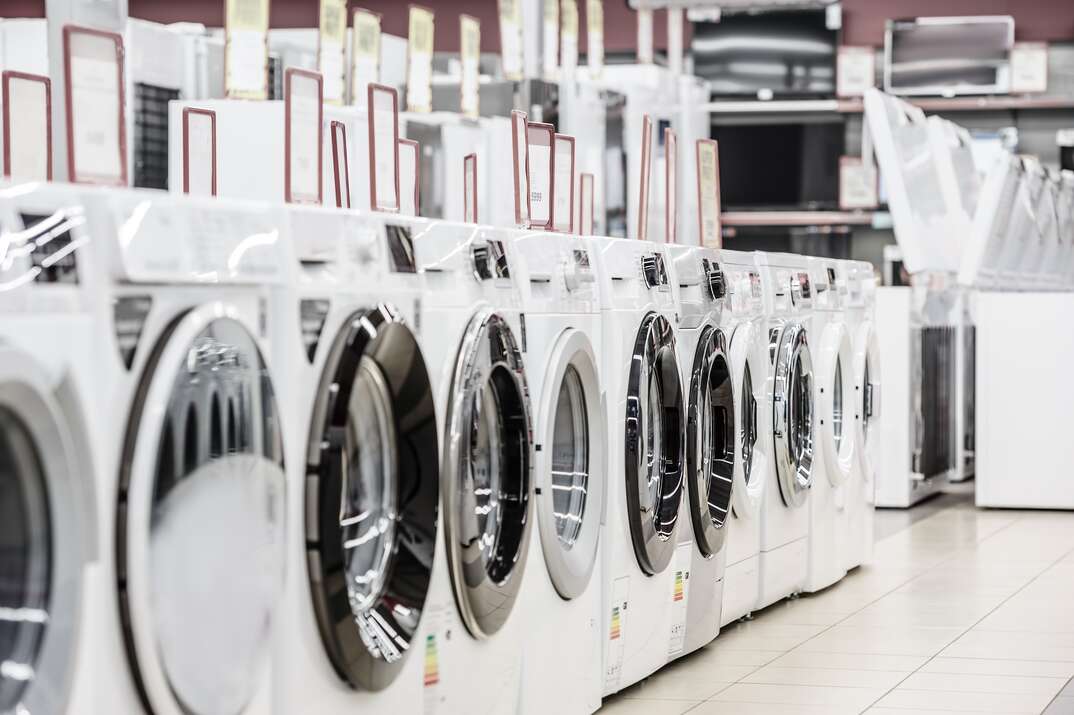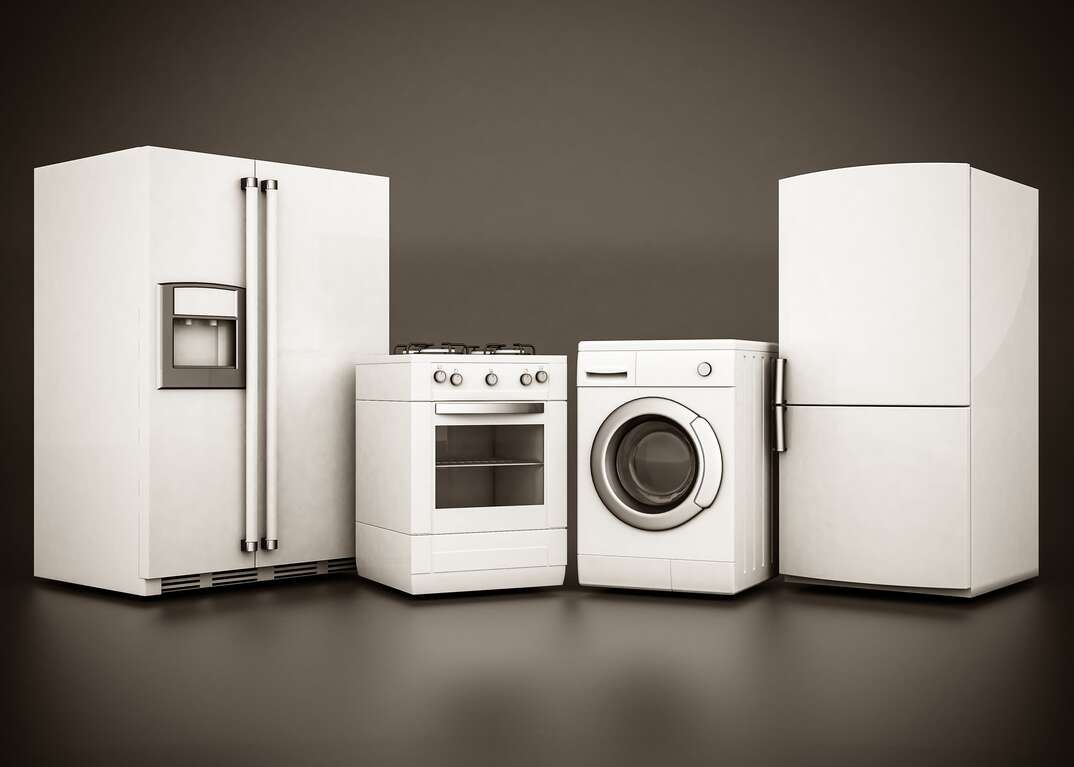Haunted (Smart) House: The 5 Spookiest Smart Home Features and Products

As it gets smarter, smart home technology feels like a crossover between the supernatural and the super-technical. Feel like you’re being watched? Hopefully it’s just the smart security cameras with facial recognition technology. Heard a noise in the middle of the night? Cross your fingers your smart assistant is just talking to itself.
This May Also Interest You: What’s a Google Nest Hub and What Can You Do With It?
The more you automate the systems of your home and the more appliances you have running outside your immediate control, the quicker the whole place starts to feel, well, haunted. That’s pretty freaky, as evidenced by these, some of the creepiest smart technologies and features you can invite into your home.
1. Things With Blades
Horror film 101: Don’t let the wrong thing get into the wrong hands. In this case, the “wrong thing” is a blade, and the “wrong hands” are the mechanized clutches of smart appliances.
Your smart blender — though equipped with a rapidly spinning blade — is perhaps the least of your worries in this department. The extent of smart blender features includes intuitive blending and wireless sensing technology — both great for smoothie-making. And considering that blenders are a counter-based appliance, there’s no need to worry about yours wandering off.
Put those blades on something with wheels, however, and things change a little bit. Machines with minds of their own are objectively terrifying — but the idea of, say, a robot lawnmower (à la this ’80s horror comedy film) is perhaps the most upsetting.
These things aren’t smart enough to plot a path of destruction. Most models, like the Husqvarna Automower and WORX Landroid, don’t even cut grass in straight lines. Instead, they “just run around randomly,” according to an Amazon reviewer, which — somehow — is worse.
For now, most smart lawnmowers are restricted to the perimeter you set for them. Some, like the Automower, can work together with two or more mowers to mow a larger area. Now, if you want to create a fleet of autonomous, blade-wielding robots, be our guest. Just keep them clear of our yards.
2. Whispering Smart Assistants
If you live alone or if the person you usually share the bed with is away overnight, the proverbial things that go bump in the night tend to get amplified when it’s time to turn the lights out. You may lie there repeating to yourself, “It was only the wind,” or suddenly wondering whether you locked the door but are too spooked out to get up and take care of it. Perhaps you take comfort at least having your smart home assistant to keep you company, have it lull you to sleep with a bedtime story or maybe even sing you a lullaby. But if you have your Amazon Echo set to Whisper Mode, you may be in for a restless night with your eyes poking out of the top of your covers that you have tightly pulled tight over your face.
Whisper Mode exists so you can continue using Alexa voice-control functions late at night, in mutually hushed tones, without waking the baby or your spouse who has to work in the morning. But what normally would sound like a gentle, soothing response to your commands when you’re not home alone can turn straight creepy at night in an empty house — especially if you talk in your sleep and wind up eliciting a spine-tingling whispered reply. We recommend going into your settings or simply instructing Alexa to turn off Whisper Mode before you turn in.
The last thing you want, after all, is this:
“Hey, Alexa, don’t do a demonic possession on me while I sleep tonight, K?”
[Whispers] “I’m sorry … I didn’t get that.”
3. Your Smart TV Is Watching You
There’s no creepier feeling than sensing someone watching you. But when you turn around to catch them in the act, they’ve either vanished … or there was nothing there in the first place. Shudder. If you have an internet-connected smart TV, you’re not wrong to have had this feeling — though the origins are decidedly less supernatural in nature.
Your smart TV is like a two-way mirror: On one side, the viewer just sees their reflection, while on the other, the person can see through it like a window. You turn on your smart TV to watch your favorite streaming service, only for your TV to look straight back at you.
According to Consumer Reports, many smart TVs send data about what you watch to companies like Amazon, Facebook, Google and others. Even if you don’t have Netflix installed, your TV may still be sharing data with the company. Your data is collected and transmitted via a technology called automatic content recognition, which identifies the show or movie you’re playing and shares that information with the TV’s manufacturer and other interested parties. For the most part, it’s used to show you targeted advertisements.
Luckily, you have some control over this feature. The settings aren’t always easy to find, but you should be able to locate them in the settings menu under options like “Privacy” or “Data.” Use Consumer Reports’ guide on how to turn off data collection on popular smart TVs and streaming services. However, there’s only one way to be sure nothing’s watching you from behind that screen: Disconnect your TV from the internet.
More Related Articles:
- Samsung Smart Refrigerators: Smart Features and How They Work
- What Is a Google Nest Learning Thermostat and What’s It Do?
- How to Set Up a Ring Doorbell
- Everything You Need to Know about Samsung Smart Microwaves: Features and Functionality
- How Much Does It Cost to Install a Keyless Door Lock?
4. Tech That Watches You While You Sleep
While the Google Nest Hub Sleep Sensing feature’s intended purpose certainly seem admirable — monitoring the duration and quality of your sleep, providing related data and helping you determine whether you’re catching enough Z’s — feeling like someone’s watching you is rarely associated with the sort of serenity that engenders a good night’s rest.
As the consumer technology reviewers at CNET explain, Sleep Sensing is powered by Google’s proprietary Motion Sense, which in turn is powered by Soli, a miniature radar that can detect submillimeter movements. “Sleep Sensing uses this mini radar along with microphones, temperature sensors and light sensors to analyze your sleeping habits and offer suggestions on how to improve your shut-eye,” CNET states.
OK, first of all, thanks for the concern for our health and well-being, Google; it’s the thought that counts. That said … being watched intently while in an unconscious and highly vulnerable state? The only thing normal about that is most likely of the “para” variety, if you catch our drift. We’ll just go ahead and drink a couple extra cups of coffee in the morning before work, instead.
5. Smart Toothbrush Wants a Good Look at Your Chompers
Unless there’s something going wrong in there — or your dentist hands you that little mirror to show you where you could be flossing better — you probably don’t look inside your mouth much. The ONVI Prophix was dreamt up by someone who sought to change that … for some reason?
The toothbrush is equipped with a light and an HD camera that connects to your phone via an app so you can watch your brushing session live. Most of us probably think of ourselves as having pretty good oral hygiene. However, there’s not much you can hide from a video feed. You can also save photos and video for future reference — but having a dedicated folder of teeth photos on your phone is a little creepy. At the very least, it’s something you’ll have to be prepared to explain.
The Prophix begs the question: Why? Why does a toothbrush need to “see” inside your mouth? Are there some places a camera just doesn’t need to be? Perhaps others wondered this, too; the Prophix website seems to have been abandoned in 2016, without putting its camera toothbrush on the market.
And perhaps we’ve learned from that experience. These days, smart toothbrushes — like the Oral B iO and the Hum by Colgate — are sticking to animated renderings of your maw to show you where you could be brushing better.


